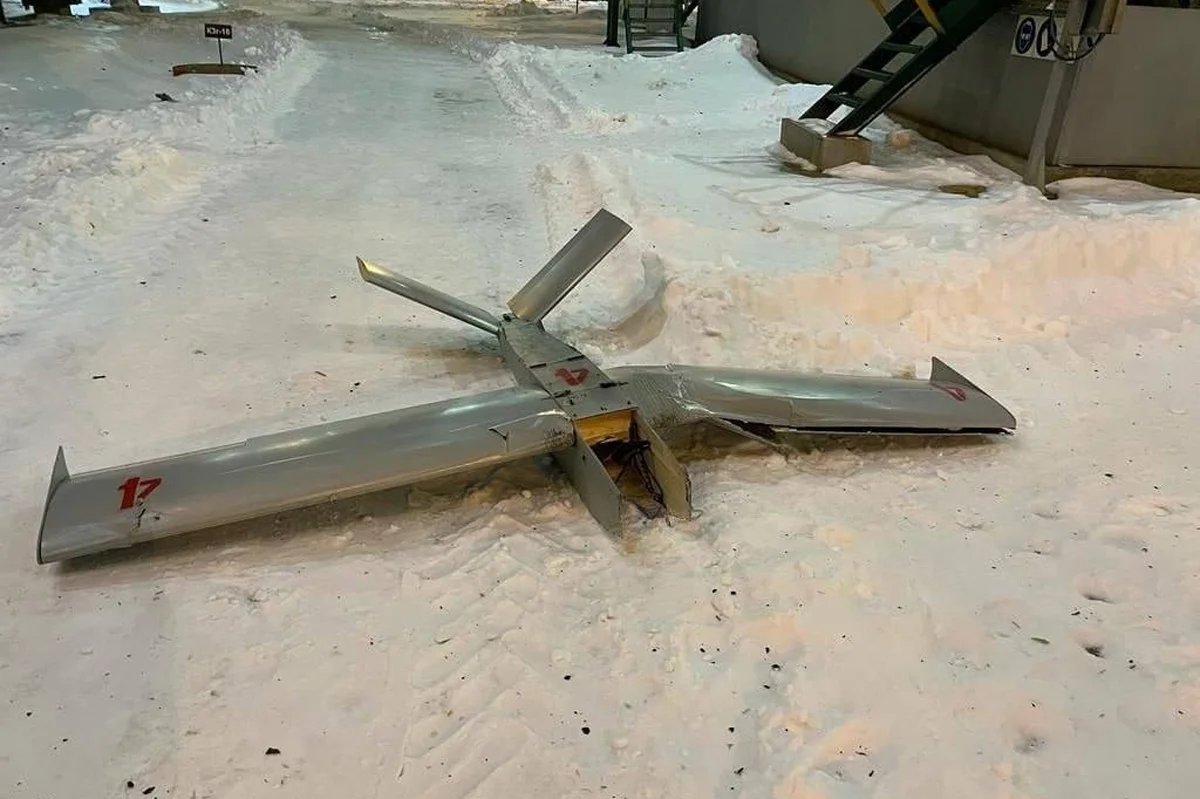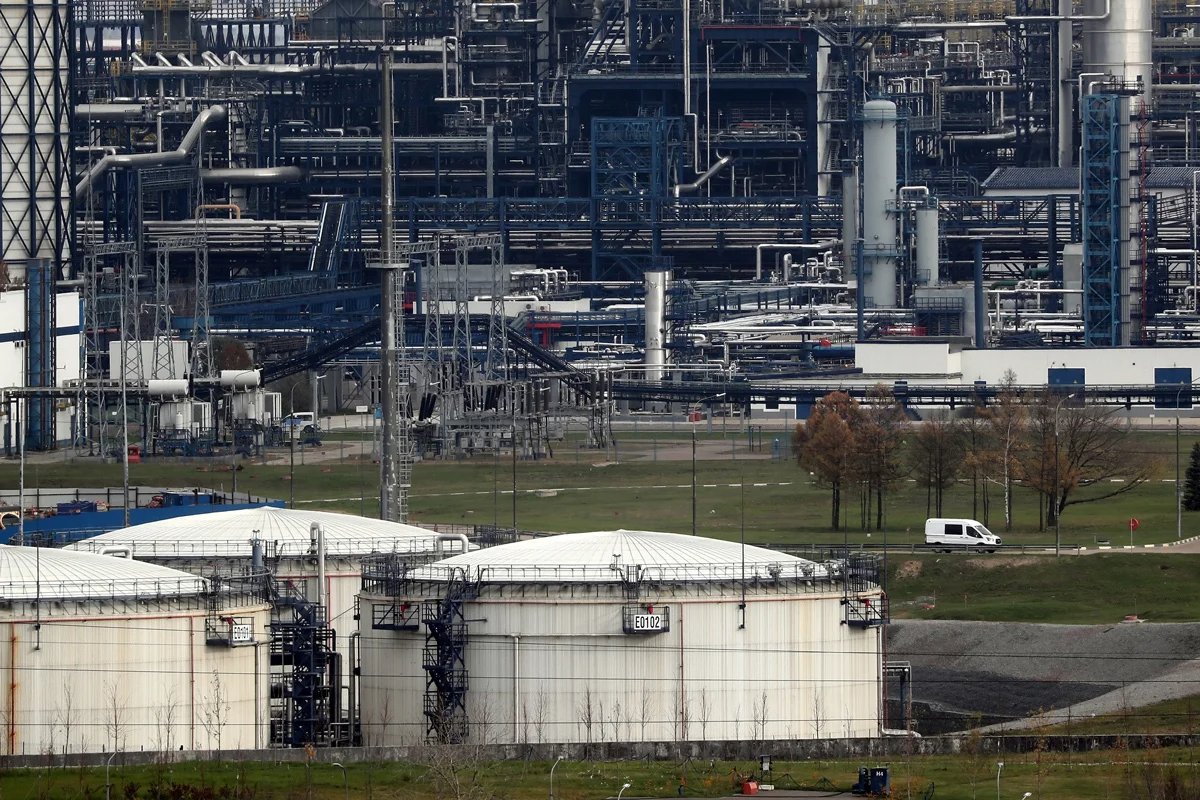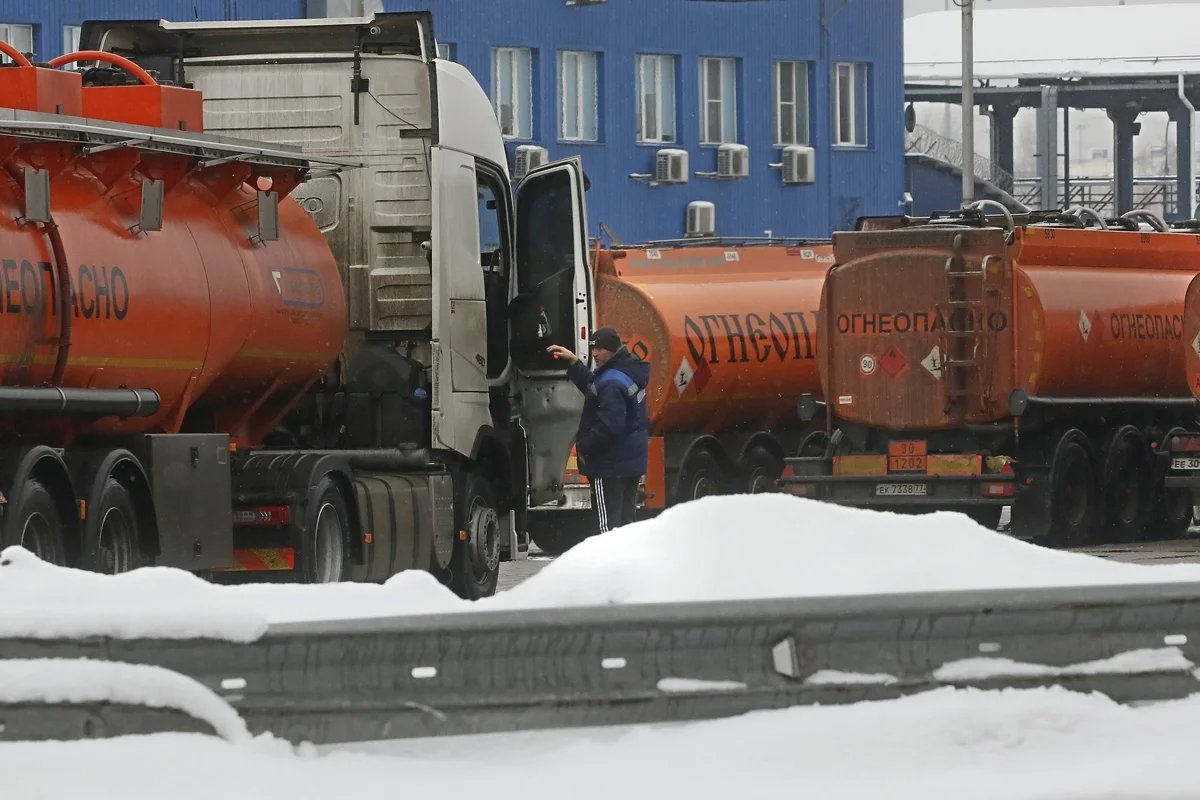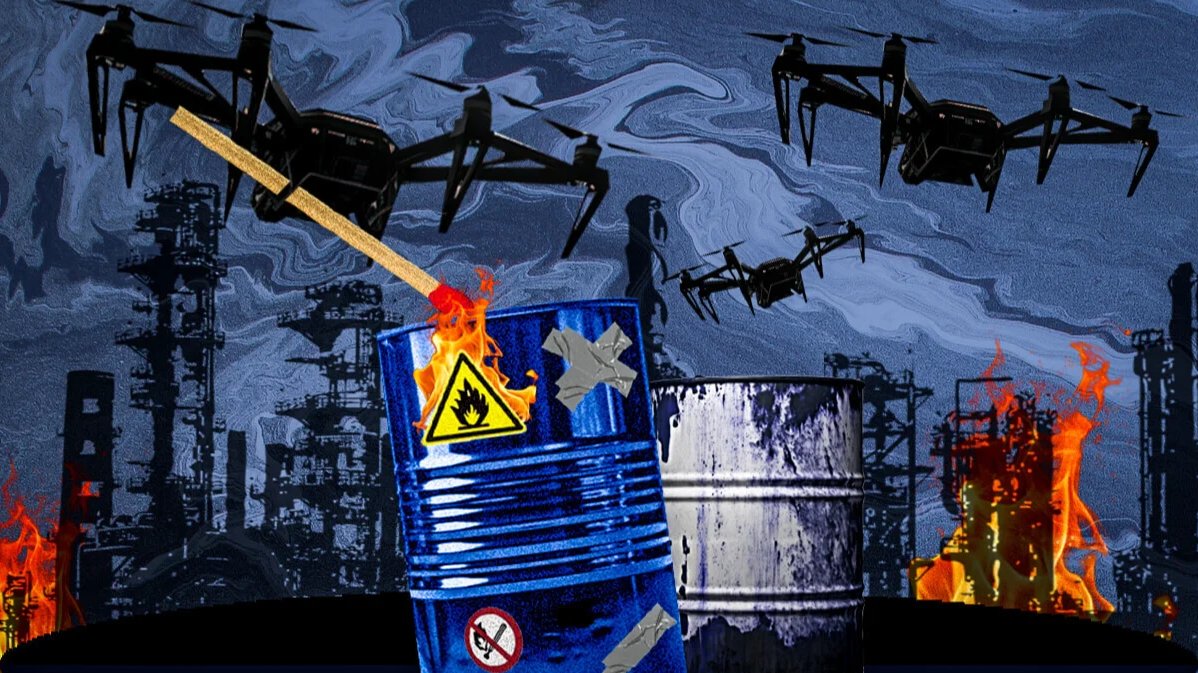In recent weeks, the Ukrainian army has scaled up its drone strikes against the Russian oil industry and had disabled about one sixth, or 16%, of Russia’s motor fuel production by mid-March, an average loss of approximately 0.7 million tonnes of petrol and 1.1 million tonnes of diesel per month. Repairing the damage at large refineries usually takes months.
As both oil companies and the Russian state have the means to make up any shortfall in production in the short term, the attacks have yet to deal a critical blow to Russia’s most important industry. But if the attacks continue, the reduction in refining capacity could cause price hikes and petrol crises in regional markets, as well as complicating the supply of fuel to the Russian military in Ukraine.
Undergoing repairs
The Armed Forces of Ukraine launched 23 attacks on Russian oil refineries and storage facilities between mid-January and mid-March. In nine of those cases, the targets belonged to Russia’s largest oil company, Rosneft. Two facilities were hit twice: an oil depot in the southwestern Kursk region and the Petersburg Oil Terminal in Russia’s second city.
There were 11 unsuccessful attacks, in which drones were either shot down or caused no damage. This includes the attack on the Novoshakhtinsk refinery, in Russia’s southern Rostov region, which despite being taken offline in the immediate aftermath of the attack, restarted operations later the same day; and the attempted strikes on Kirishi, in the Leningrad region, Novokuybyshevsk, in the Samara region and the Slavneft-YANOS refinery in the central Yaroslavl region.
Overall, four regional oil storage facilities and seven refineries have suffered damage. Five of those refineries are large plants that play an important role in both the domestic market and exports. They also produce aviation and marine fuels required by the army.
Two Rosneft refineries, in Tuapse, in the southern Krasnodar region, and Syzran, in the Samara region on the Volga, have suffered the most serious damage and are currently offline. In Syzran, where one refining unit was bombed, the other had already been shut down since July for long-term repairs, which were set for completion this April. However, the refinery in Tuapse appears to have suffered the worst damage: a drone strike and ensuing fire occurred on 25 January, and the refinery remains out of action two months later. “It’s not in operation. It’s undergoing repairs,” an expert at an international company that monitors Russia’s refined oil market told Novaya Europe.
Drones have decreased primary refining capacity at two central Russian facilities: by 70% at Rosneft in Ryazan, and 50% at Nizhegorodnefteorgsintez, a subsidiary of Lukoil in the Nizhny Novgorod region. Refining was completely halted at the export-only facility at Ust-Luga in northwestern Russia, while it was cut in half at the Ilsky oil refinery in the south. Lukoil’s refinery in Volgograd, meanwhile, lost a quarter of its output.
Missing fuel
Using company, market and media data, Novaya Europe has calculated that the inoperative units represent 16% of Russia’s total petrol and diesel production. Sergey Vakulenko, an expert for the Carnegie Endowment for International Peace, provides a similar estimate: “If we take into account the capacity of the damaged units, the production of commercial fuels — petrol, diesel, and paraffin — may decrease by 15%”.
Reuters estimates that the strikes have knocked out about 7% of Russia’s primary refining capacity — around 4.6 million tonnes cumulatively during the first quarter of 2024. JPMorgan Chase & Co’s estimates are higher, averaging out at 3.7 million tonnes a month, equivalent to over 27 million barrels.
Some assessments look less bleak for Russia. For instance, analysts at S&P Global Commodity Insights told Novaya Europe that the Russian market had lost the capacity to produce about 500,000 tonnes of petroleum, and a slightly greater volume of diesel, which equals 2.5 million tonnes of primary refining, in an average month.
Torbjörn Törnqvist, head of crude trading giant Gunvor, also estimated that the market had lost 2.5 million tonnes of refining capacity.
Damaged primary refining units are, however, not difficult to repair, two oil market experts told Novaya Europe. The equipment is fairly simple, and most of their constituent parts are manufactured in Russia and can easily be repaired on site, Vakulenko explained.
“The loss of more complex secondary processing chemical reactors, control systems, pumps, and other dynamic equipment is more impactful, but such attacks are harder to organise: primary processing columns are a much more visible target,” he believes.

The drone that crashed into the Yaroslavl oil refinery, 29 January 2024. Photo: Yaroslavl Glavny / Telegram
Of the major refineries, the one in Tuapse has been at a standstill for over a month, and repairs at Lukoil-Nizhegorodnefteorgsintez in Nizhny Novgorod and Rosneft’s refinery in Ryazan may take a long time. Rosneft experts still aren’t sure how long it will be before the Syzran refinery is operational again. A market source told Novaya Europe that the repairs could last anywhere from three weeks to several months.
The Ilsky refinery, in the Krasnodar region, and Novatek’s vacuum gas oil (VGO) processing facility in Ust-Luga were shut down for less than a month. Neither is very large and both are almost exclusively export-oriented. The status of the Lukoil Volgograd refinery is less clear. One source told us it was out of action for 18 days in February; other sources say the repairs are still ongoing and will last until the end of May.
Engineering discord
Losses of approximately 1 million tonnes of each type of fuel a month aren’t a huge blow to the Russian market, with domestic shortages or price hikes extremely unlikely, market sources and experts told Novaya Europe.
Russian refineries produced 44 million tonnes of gasoline and 88 million tonnes of diesel in 2023, which more than covers domestic needs. Various estimates — the Russian authorities don’t currently publish precise data — put annual exports at 3 to 4 million tonnes of gasoline and about 40 million tonnes of diesel.
“There’s definitely no shortage of diesel. In the worst-case scenario, if the drone strikes continue, we may see an increase in the price of gasoline and jet fuel,” the head of a Russian industry analysis group told Novaya Europe.
Price hikes may occur in regions most dependent on supplies from the affected refineries, however. Local shortages may be aggravated by tank cars being held up on the railway, which will come about from the need to redirect fuel supplies, two market sources say. But they believe such local crises are unlikely to last.

Photo: Maxim Shipenkov / EPA-EFE
The Centre for Research on Energy and Clean Air (CREA) holds a different view, believing that fuel prices in Russia may rise as part of a worldwide trend, due partly to the strikes on Russia’s energy infrastructure. “Export prices and domestic oil product prices are linked. Targeting refineries aims to raise petrol prices domestically and create social discontent,” CREA analyst Vaibhav Raghunandan told Novaya Europe.
According to Russia’s statistics agency Rosstat, retail petrol prices rose by 0.6% between 31 December and 18 March, while diesel prices fell by 0.1%. However, the wholesale price of 92 octane petrol on SPIMEX, the St Petersburg International Mercantile Exchange, has gone up by a third since the start of the year.
The price increased further after the mid-March attack on Lukoil’s refinery near Nizhny Novgorod, according to analysts at S&P Global Commodity Insights.
Rising wholesale prices can cause problems on regional markets, which is how last year’s petrol price hikes in southern Russia and Siberia began. Last spring, the cost of fuel on the stock exchange rose sharply, resulting in higher retail prices and regional shortages due to increased summer demand from the agriculture sector amid refinery repairs.
To avoid fuel shortages in the current situation, the Russian authorities have imposed a six-month ban on petrol exports that started 1 March.
“If the attacks continue, Belarusian refineries will likely step in, and the Russian government may introduce subsidies or preferences for them,” a Russian oil expert said.
The total capacity of two large Belarusian refineries covers Belarus’s needs 3.5 times over, Vakulenko notes. Therefore, according to his calculations, even if the attacks continue and the deficit of petrol and jet fuel for civil aviation reaches 20-30%, Belarusian imports will cover that loss. Vakulenko also believes that 40% of Russia’s oil refining facilities are beyond the reach of even the latest weapons supplied to Ukraine.
Budgetary gains
Exports have already fallen, but the Russian budget hasn’t suffered. Since January 2024, Russia has stopped levying tariffs on exported crude and oil products. Instead of taxing oil exports, Russia has raised the mineral extraction tax and adjusted a number of other tariffs.
“The refinery attacks create losses for Russian oil companies, but don’t harm the budget and have virtually no effect on Russian export revenue,” Vakulenko claims. The Russian budget hasn’t been impacted as it doesn’t profit from the refineries, which are subsidised by the state and received about 260 billion rubles (€2.6 billion) in both January and February.
From 1 January to mid-February, before the export ban came into force, Russia shipped almost a third less petrol abroad compared to the same period last year because companies had redirected supplies to the domestic market amid refinery shutdowns. Diesel and VGO exports fell by a third between January and March, Bloomberg reported.

Photo: Maxim Shipenkov / EPA-EFE
The latter development is actually favourable to the Russian budget. In spite of the embargo and price cap, Russia remains one of the world’s largest diesel fuel suppliers, meaning that the strong drop in supplies, and the ban on petrol exports, contribute to a rise in global oil prices. The price of Russian Urals-grade crude is now at a six-month high, approaching $78 (€72) a barrel. The drop in refining capacity has already led to an increase in Russian oil exports since some of the crude cannot be refined domestically anymore. The increase in the supply of crude on the global market may deflate the rallying price.
Bloomberg quotes Saxo Bank estimates saying the strikes on Russian refineries have triggered gas price hikes in the EU, which buys Russian liquefied natural gas (LNG). On 18 March, natural gas prices on the Dutch gas trading platform TTF rose by 7.7%, the largest price spike since 3 January.
Droning on
Large refining capacities and potential supplies from Belarus mean the current production issues will not create a major fuel shortage for the Russian army. Vakulenko explains that the army’s fuel needs are covered by refineries further away from the Ukrainian border that are therefore beyond the range of enemy drones.
“If several refineries are forced to shut down at once, there’ll be a noticeable effect. For now, though, these barely sting,”
an expert at an international think tank told Novaya Europe anonymously, adding that drones could never be as effective as Ukrainian missiles and bombs, which would pose a grave threat to Russian refineries if they had the range.
However, rising oil prices in Russia may have some impact on the mobility of Russian troops fighting in Ukraine, according to open-source intelligence analyst Kirill Mikhailov, who pointed out that many Russian servicemen were forced to use their own money or rely on donations to refuel the vehicles they use in the combat zone. This happens because small-group tactics prevail at the frontline and they “cannot be supported by the cumbersome, truck-based, centralised logistics system that the army is in no hurry to move away from,” Mikhailov explains.
Therefore, any rise in petrol prices will indirectly affect army supplies at the frontline, Mikhailov claims. Raghunandan, however, believes that future drone strikes resulting in price hikes will not cause fuel shortages for the Russian army since any shortfall would likely be made up for by diverting fuel stocks intended for export.
Join us in rebuilding Novaya Gazeta Europe
The Russian government has banned independent media. We were forced to leave our country in order to keep doing our job, telling our readers about what is going on Russia, Ukraine and Europe.
We will continue fighting against warfare and dictatorship. We believe that freedom of speech is the most efficient antidote against tyranny. Support us financially to help us fight for peace and freedom.
By clicking the Support button, you agree to the processing of your personal data.
To cancel a regular donation, please write to [email protected]

